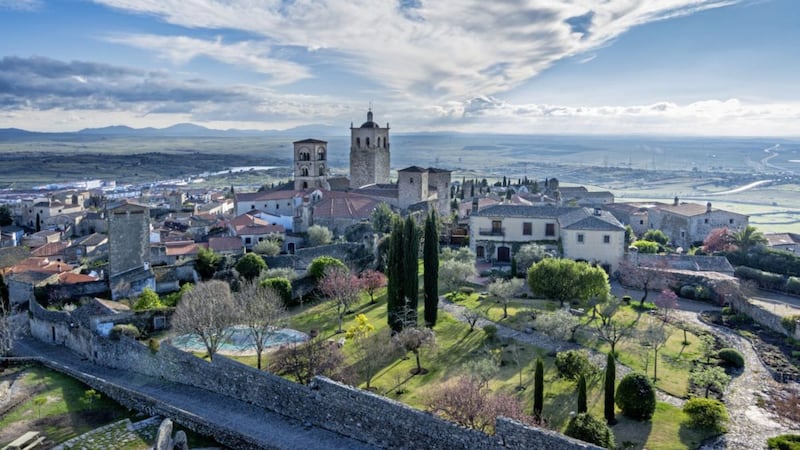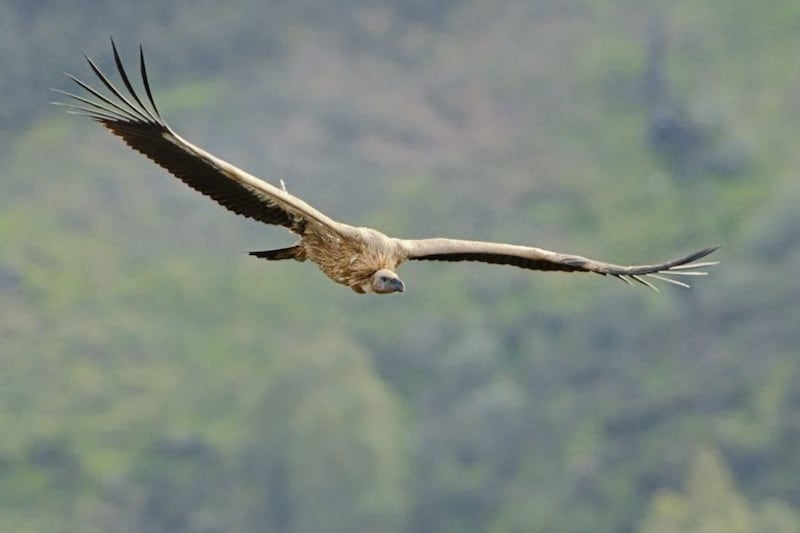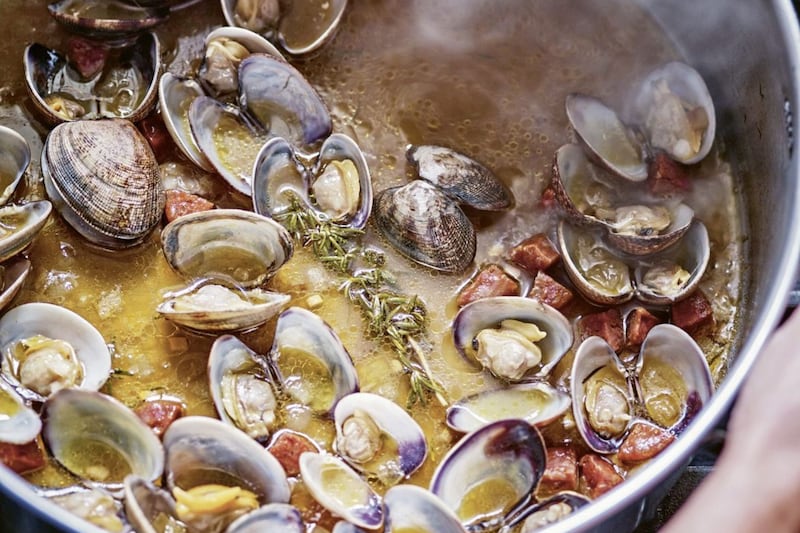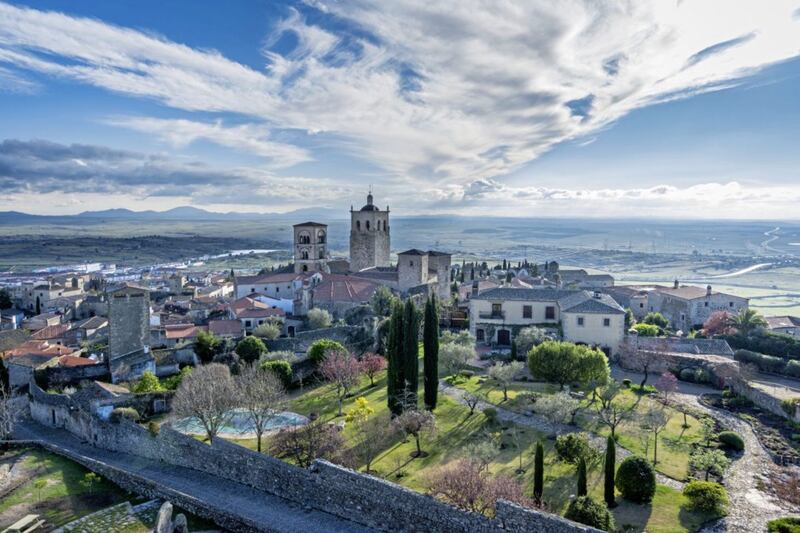CLOSE to the top of the tower of the 13th century church of Santa Maria, among carvings depicting Bible scenes, is a stone shield celebrating the might of Athletico Bilbao. To be fair to the soccer-fan sculptor, no-one told him that the theme of all the carvings were supposed to be religious when the tower was being restored in the 1970s.
The church sits on top of a hill over looking the town of Trujillo in the northern part of the Spanish province of Extremadura. The old town rises in a series of twisting, stone-paved streets from the central Plaza Mayor, one of the biggest town squares in Spain and one of the most stunning.
With views over the flat surrounding countryside and mountains in the distance, it has been a strategic location for centuries, but its most famous sons were explorers.
Francisco Pizarro, commemorated by a statue in Trujillo’s Plaza Mayor, was a conquistador who led the armies that defeated the Incas in South America and claimed most of the continent for Spain. He was the illegitimate son of an army officer whose house, now a museum, stands close to the summit of Trujillo. Another house was the birth place of Francisco de Orellana, a soldier in Pizarro’s army who while seeking the mythical El Dorado became the first person to navigate the Amazon.
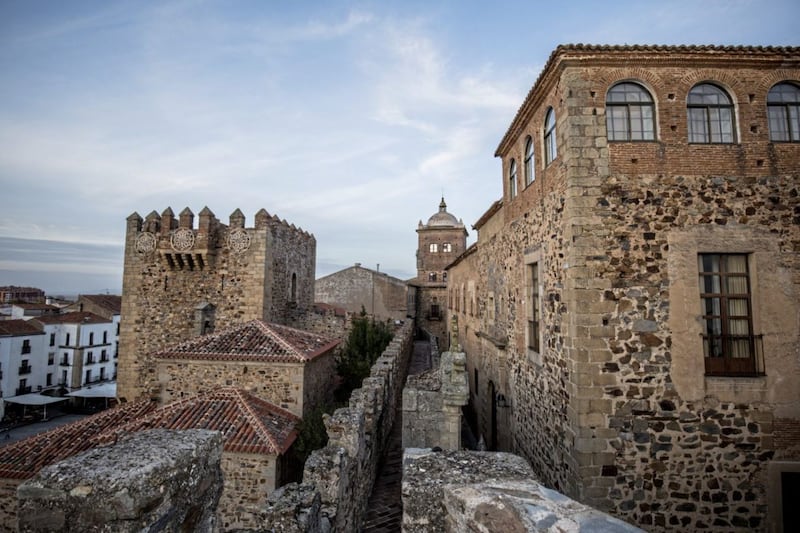
Around 40 minutes’ drive further south lies the small, compact city of Cáceres which is one of those places that once you have been to you immediately start planning your next visit. It was once a walled city, whose Moorish fortifications are more than 800 years old. It was also home to a vibrant Jewish community until their expulsion from Spain in 1492, the same year that the last Arab enclave in the Iberian Peninsula fell.
Following the Christian reconquest the Moorish buildings were adapted by their new owners and the church of Santa Maria, on the site of a former mosque, incorporates both Romanesque features and more recent Gothic architecture. In July 1937, during the Spanish Civil War, the city was bombed by Russian planes in support of anti-Franco Republicans. It was 9.30 in the morning and there was a service taking place. Forty worshippers were killed and you can still see the scars on the brickwork of the church.
Across the way is the Bishop’s Palace, although there is no cathedral in Cáceres, and carved into the brickwork on either side of the main door is an Asian man to the left and an Aztec to the right, representing the extent of the Spanish empire in 1587, stretching from the Philippines to Mexico.
A former Jesuit School is now a drama academy and close to the roof are holes left by scaffolding in which kestrels nest and you will often see them soaring above the city. In the Semana Santa (Holy Week) museum you can see an impressive, and slightly spooky, display of the hooded robes worn by members of the city’s different brotherhoods as they carry altars around the streets during Easter celebrations.
Climbing upwards towards Plaza de San Mateo you come to Museo de Cáceres, which traces the region’s history with ancient engravings (strangely reminiscent of those in New Grange) and artefacts left by the Celts, Romans, and Moors. It also has a compact art gallery with works by Picasso and Miró on display.
Scenes for Game of Thrones were filmed in the city and at nearby Los Barruecos natural park, close to the town of Malpartida de Cáceres, where an iconic battle scene from Season 7, in which a huge dragon sweeps in to torch dozens of soldiers during a battle between the Lannister and Daenerys Targaryen armies, was shot.
Since the regional tourism authority started marketing the location’s links to Game of Thrones visitor number have increased by 26 per cent.
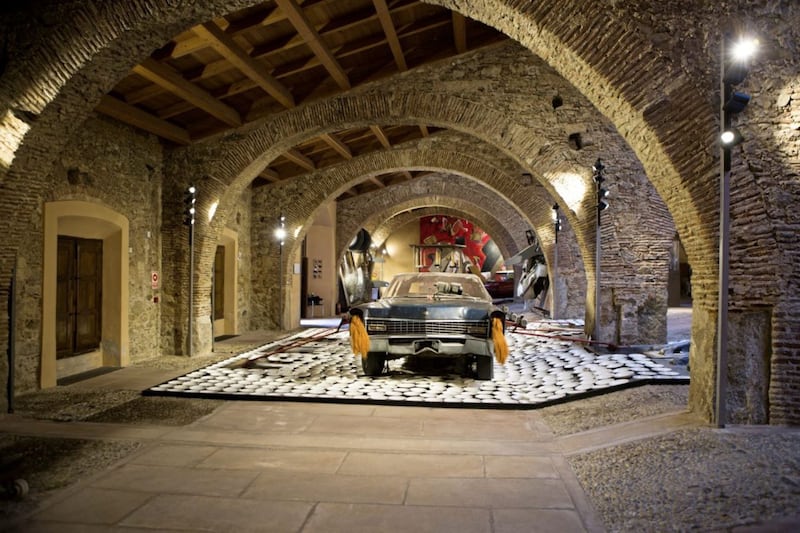
A short drive away is a museum dedicated to the work of the late German experimental artist Wolf Vostell, whose wife was from the area and still lives there. He was a member of the Fluxus school of artists and unsettling displays use rusting cars, farming implements, moving parts, canvas, wood and paint as well as video and sound installations.
One of the most impressive pieces is an outdoor tower structure which incorporates parts of a fighter jet, cars and old-style TV sets on top of which storks have built their nests and other smaller birds also flit in and out of – all man-made objects eventually return to nature. There are also works by other artists on display, including two by Yoko Ono.
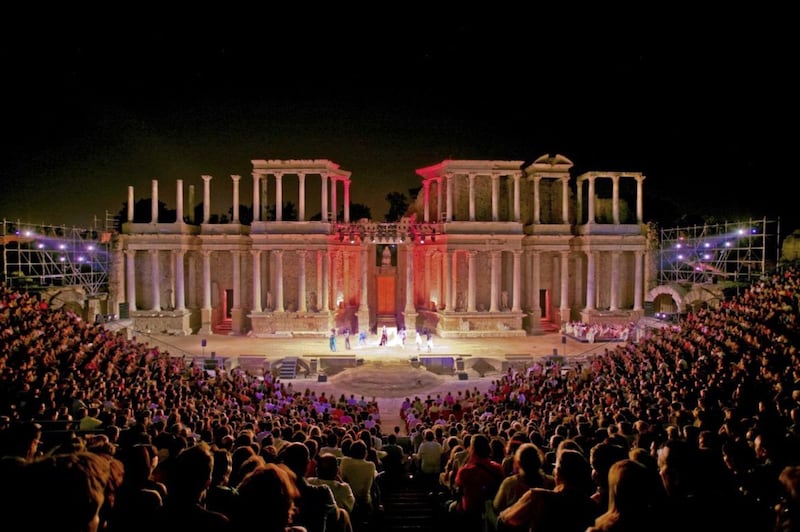
In Mérida it’s all about what the Romans did and – with a theatre, amphitheatre, viaducts, a bridge (that was still being used by traffic until 1991) and a temple to the goddess Diana – they have left a huge legacy. Formerly the capital of the Roman province of Lusitania, which spanned both modern-day Extremadura and part of Portugal, the city is now a World Heritage Site.
Until the 1930s the theatre was just a few jutting bricks poking through grazing ground for cattle but excavations, which are ongoing, uncovered one of the best-preserved Roman theatres in the world and where drama festivals are being held once again.
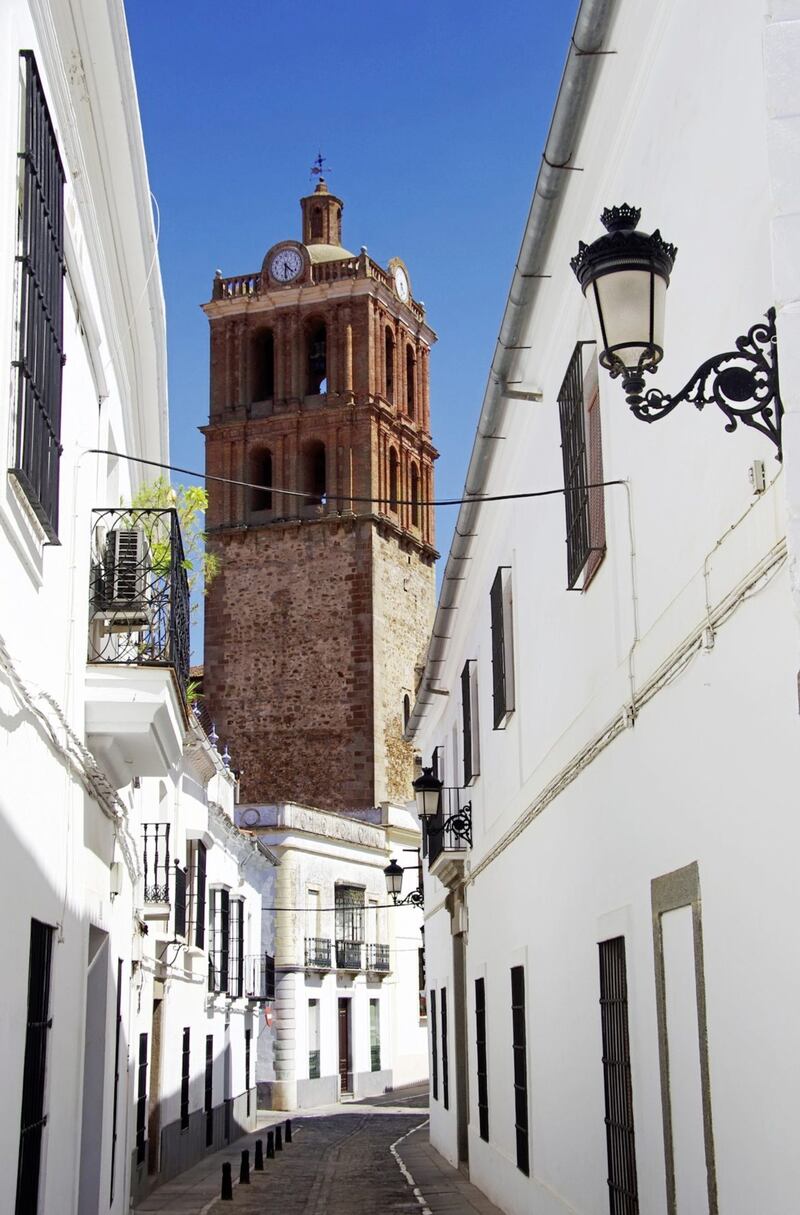
A former Moorish fortress sits at the centre of Zafra, in the southern-most part of Extremadura. Its low white-bricked buildings and flower-decked windows are clearly influenced by nearby Andalucia. Not surprising then, with its small plazas, churches, refurbished palaces and convents, Arabic brickwork and archways along orange-tree-lined streets, Zafra is known as Little Seville.
Food and drink
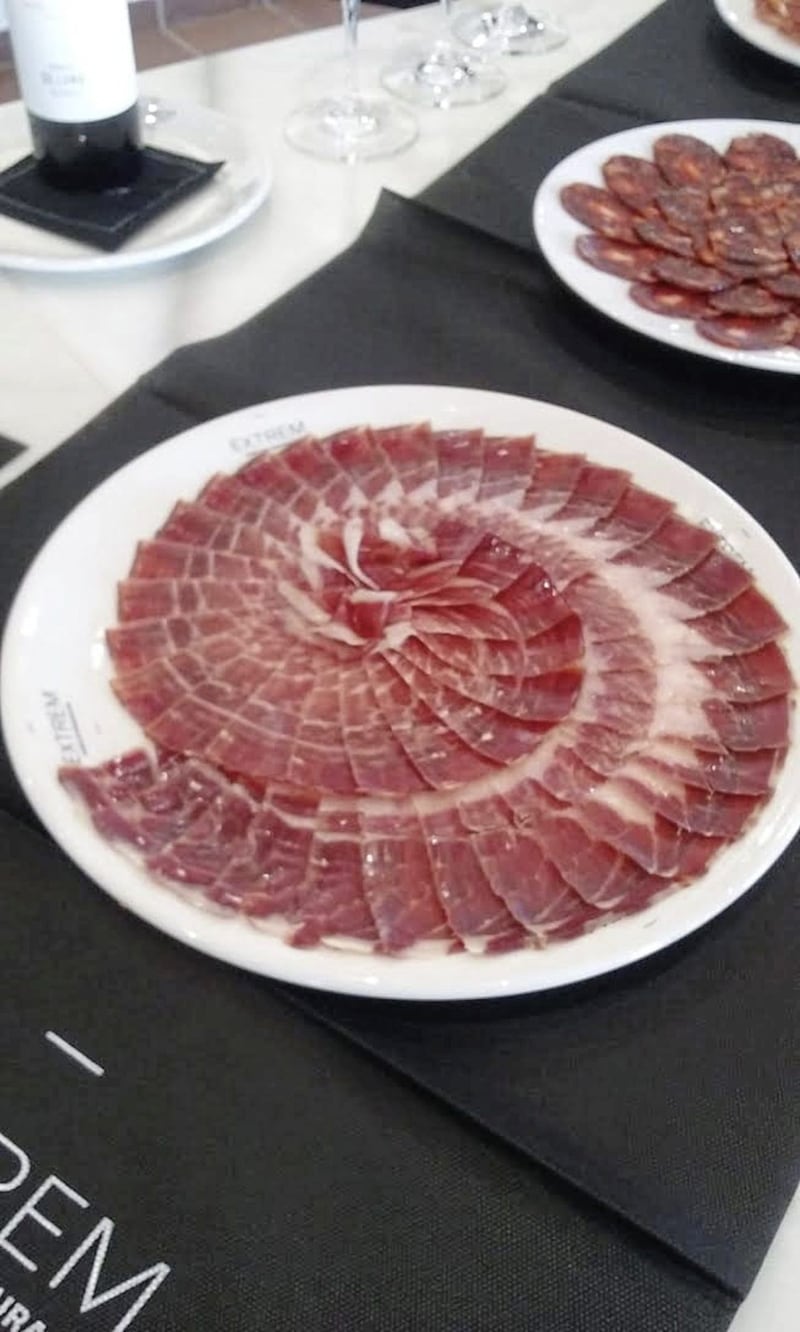
Extremadura is famed throughout Spain for its Iberian ham – Dehesa de Extremadura. The most expensive and most tasty comes from Iberian pigs which run freely and are feed on acorns. Professional jamon cutter Pepe Alba runs gastronomic tours: email pepealba.cortandojamon@gmail.com.
The Espezia cookery school in Merida, run by Cristina Cle and Josefina Valverde Grimaldi, gives you a chance to learn how cook both traditional and contemporary Extremaduran dishes: www.espezia.es.
Catalina Bustillo will guide you through the exciting world of Extremaduran wines: visit cataconcati.es.
You can visit Bodegas Habla close to Trujillo to see the wine-making process, from grape to bottle: bodegashabla.com.
Factfile
Getting there
Extremadura is within a few hours drive (and connected by bus and train) from Madrid and Seville. Ryanair fly to both cities from Dublin with fares to Madrid starting at €24.99, and for Seville starting at €49.97. (ryanair.ie)
Places to stay
NH Palacio de Oquendo in Cáceres. Four star, very central and prices from around €75.
Mérida Palace Hotel – Five-star luxury in the main square. From €99 for a double.
For something different you can experience life as a Roman at The Aqua Libera Rural Hotel, about half an hour outside Mérida. Recreating a Roman villa with period rooms, you can dress in togas as you lounge by pool, eat food cooked to original Roman recipes and sip honey-flavoured wine before bathing in thermal baths and enjoy a massage.(aqualibera.com)
